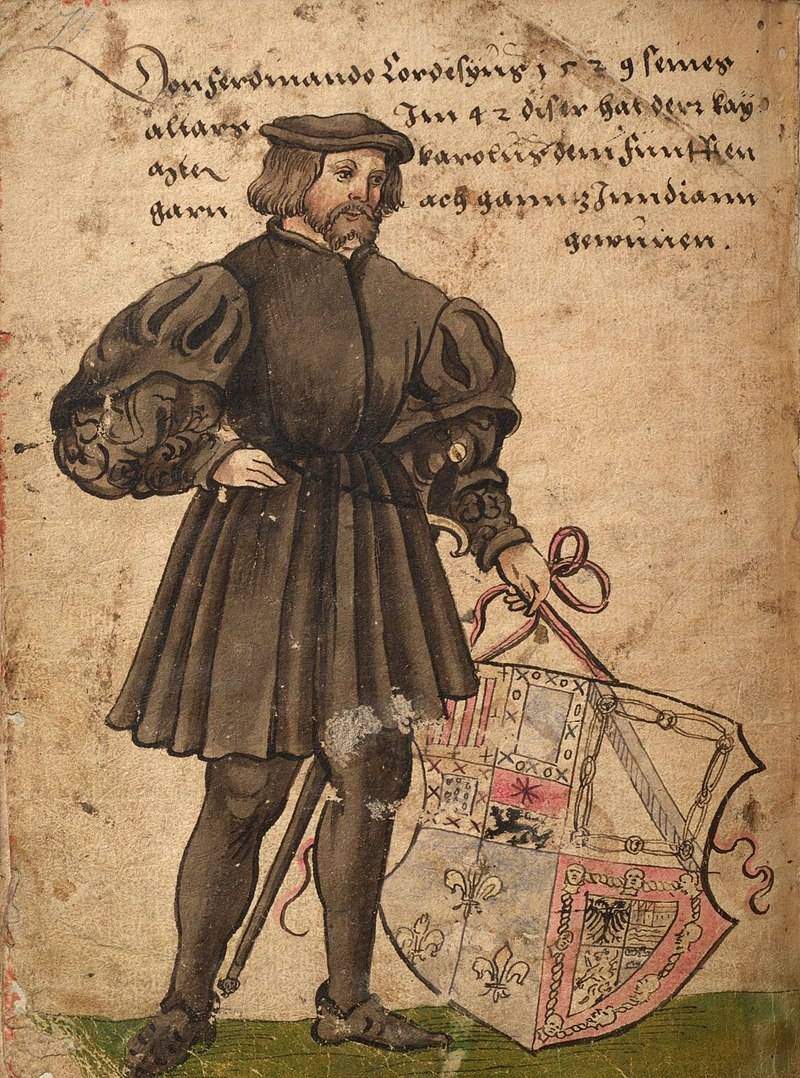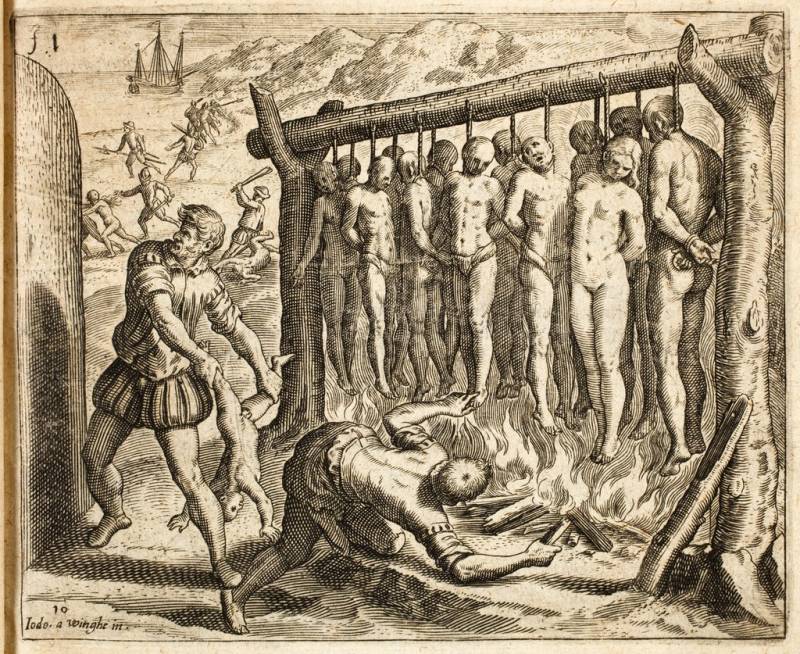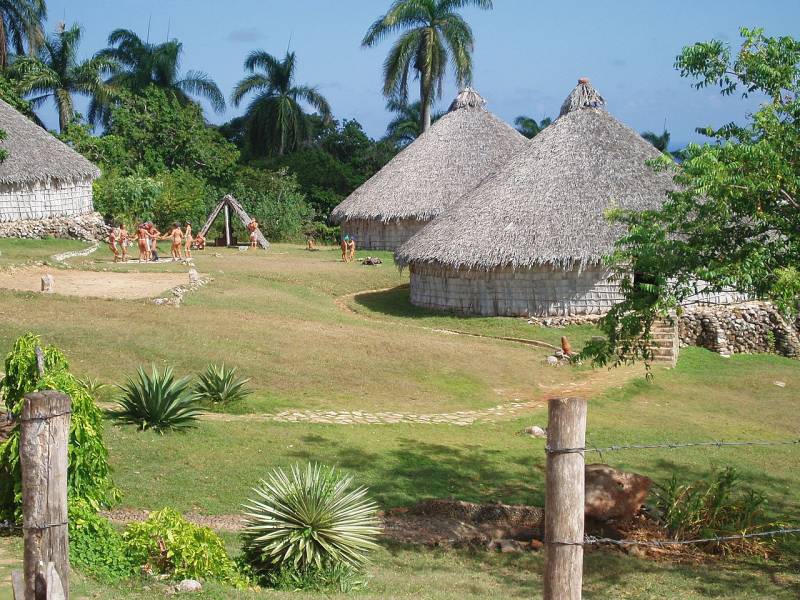Island of Unfreedom - Spanish conquest of Cuba

Diego Velazquez de Cuellar
The fact that Cuba is an island was proved to progressive mankind by the Spanish navigator Sebastian Ocampo. In 1508, he circled Cuba from all sides, which took as many as 8 months. Ocampo was a Galician from the port city of Noya, and therefore a man of practical wisdom. Walking around the island along the coast, he immediately noticed its advantages from the point of view of a strong business executive - convenient harbors in the modern Havana Bay and Cienfuegos, a large number of fish off the coast, fertile lands and placers of gold. Ocampo told the people about all these earthly blessings upon his return to Hispaniola, an island where the Spaniards were already well fortified.
The Spanish crown did not really want to conquer Cuba (note to the reader - the island was then more often called "Juan" or "Ferdinand"). The question of an armed expedition was not even raised at the Council of the Kingdom. And it was decided by the performers on the ground. Among the group of initiators we find the following names: Hernán Cortés, a middle-class planter who had previously served in the "Indies" as a notary and secretary, the royal treasurer of Pasamonte from Santo Domingo, the priest Bartolome de las Casas, with whom several Franciscans volunteered for the campaign, desperate conquistador Panfilo de Narvaez, who came from Jamaica along with three dozen brave arquebusiers. Diego Velasquez de Cuellar was appointed to lead the expedition. It is worth dwelling on the personality of this person in more detail.
The prefix to his surname - de Cuellar, tells us that this man comes from the city of the same name. Cuellar is a small town, but with deep traditions. It lies halfway between Segovia and Valladolid and has been famous since ancient times for its blacksmiths who forge the famous Cuellar swords. In the XV-XVI centuries. Cuellar experienced a major upsurge under the Duke of Albuquerque, who built a large castle and the church of St. Francis here.
Diego Velasquez was born in 1464 and belonged to a fairly noble family. Among his ancestors was one of the founders of the military order of Calatrava. Many of his relatives made careers at court and in the structures of the Inquisition. However, Diego could not find himself for a long time. He fought in the Granada War, but gained neither fame nor fortune from the battles. The war left him sick and almost destitute. Velasquez had nothing to lose, and in 1493 he departed overseas on the ships of Columbus.

Image of Cortes in an illustration by the German artist Weiditz. 1529.
In Hispaniola, Diego Velasquez managed to rise well in gold mining and quickly corrected his position. Health problems were gone, and big money opened any doors. Velazquez managed to win the position of deputy governor of the island and moved his family to Hispaniola. But Cuellar's ambitions were no longer limited to second roles. Having learned about the voyage of Ocampo, he got excited about the idea of conquering Cuba and even financed the campaign from his own money. Excluding the characters already known to us, about 300 conquistadors on three ships joined the expedition.
Fire, cross and sword
In 1511, the conquerors landed on a small peninsula in the northeastern part of Cuba. Here Velazquez ordered the founding of a new city - Asuncion de Baracoa. The outskirts of the town were cleared of the Indians, and their leader, the cacique Hatway, was captured alive. However, it didn't do him any good.
Hathway had already fought against the Spaniards in Hispaniola and was considered an inveterate rebel and an evil traitor. In that harsh time, with such gentlemen, the Spaniards had a short calculation. It was decided to execute the leader, but to show humanity. Kasik was offered to accept Christianity in exchange for a dignified death and burial according to the Christian rite. The leader's answer was short - if the adoption of Christianity means eternal life in another world in the company of the Spaniards, then he politely refuses such an offer. There was nothing to do - Hathueya was burned at the stake.
After a short military council, Velasquez sent Narvaez's arquebusiers and a dozen horsemen to reconnoiter the area. Moving quickly to the southwest of the island, the advance party again discovered a large Indian settlement. Narvaez entered into negotiations with the natives - he said that he just sailed "to see the country" and did not want to fight, but it would be better for the Indians now to consider themselves Spanish subjects and convert to the true faith. This strange and contradictory sermon was not successful, the Indians understood little and ambushed the conquistadors. The natives were defeated, and the survivors fled across the area. Narváez later captured two more settlements.
The Spaniards regrouped and with new forces resumed the onslaught to the west. About a thousand natives went over to their side, who, in a noisy company, joined this motley army and helped the conquistadors in every possible way. Together with the Indian allies, the Spaniards, without encountering resistance, reached the central part of the island and settled down near modern Camagüey.
Here another incident took place. The conquistadors made a halt in a large Indian village, in which about 3 natives lived. At first everything went well, the Indians treated the guests to baked cassava and fried chicken. But then one of the Spaniards asked to be let into a tightly closed large house, which the natives categorically opposed. A dispute ensued. One of the conquistadors, who apparently did not like long discussions, drew his sword and began to cut down the Indians. His comrades immediately came to his aid and literally cut their way into the tabooed building. What was inside is still unknown, but, according to eyewitnesses, there was so much blood that it oozed from the walls of the hut. History also preserved the dialogue between Narváez and the priest Las Casas. Narváez asked Las Casas: “What do you think of our Spaniards? What have they done here?" Las Casas only replied: "I send you all to the devil."
After this nightmarish pogrom, the Spaniards no longer met organized resistance. Many Indians fled in horror from Cuba to the mainland or to neighboring islands. True, some of them later returned, but no one dared to oppose the conquistadors.
At the court of the tropical king
Now the Spaniards were free to settle in Cuba as they pleased. They searched for gold and cultivated tropical crops - cassava, sweet potatoes, malanga root and rice. The settlers actively bred cattle, which bred in the fields of Cuba with unprecedented zeal - the number of pigs grew to thirty thousand individuals in just three years. Horses also felt great here.
But the question remained with the Indians. The natives are not horses, and it was necessary to deal with them according to the law. The colonists demanded from Diego Velazquez, appointed governor of Cuba, to introduce the encomienda system on the island, which had already taken place in other overseas possessions of the Crown. Encomienda meant the distribution of Indians and lands to the conquistadors for personal use.
Especially active supporters of this reform were the local petty official Francisco de Morales and Hernán Cortés, the governor's secretary. But Velazquez was adamant - he does not want to enslave the Indians and will not allow it. The governor put Morales behind bars, and Cortez even wanted to hang him as a dirty rebel, but relented and limited himself to demotion. Humiliated and offended, Cortes retired to the east of the island and there, together with his companion, worked in the gold mines.
But still the governor had to give in to the demands of the encomendero. It is not known to whom they complained, but Velazquez received a letter from the king himself, in which the Indians were ordered to be divided. The king ordered to convert the natives to Christianity, to appoint auditors to protect the Indians from abuse, and to teach them to work for the benefit of the new owners.
However, at the same time, the Indians had to work for the Spaniards for no more than one month a year, and the conquistadors were obliged to provide workers with food and clothing. If an Indian came to work from a distant village, he was supposed to be provided with food supplies for the journey. To avoid this problem, the natives were also ordered to move closer to the cities.
During his governorship in 1511-1524, Diego Velasquez founded a number of cities in Cuba - San Salvador de Bayamo, Trinidad, Sancti Spiritus and Puerto Principe, Asuncion de Baracca, Havana and Santiago de Cuba. He moved his residence to Santiago.
The court of the "tropical king" in Santiago deserves, perhaps, the pen of such a master as Cervantes. It was a bizarre gathering. Many of his countrymen and relatives gathered in the palace of Velazquez, who spent time at pleasant conversations, feasts and smoking tobacco - another gift to Europeans from aboriginal civilization. At the receptions dishes of iguana meat, turtles and parrots, outlandish tropical fruits and drinks were served.
The audience listened to the endless stories of the governor's accountant Amador de Lares, who lived in Italy for 22 years and served with El Grand Capitan himself - Fernandez de Cordoba. At the court of Velazquez, Genoese smugglers and a couple of Jewish Conversos who had fled from the Inquisition were constantly spinning. The court jester Frankesillo entertained the high audience with bold jokes and performances. Ladies began to arrive from Spain - weddings were played. The first Christian wedding in the New World was with Diego Velazquez and Maria de Cuellar. Soon the governor forgave the disgraced Cortes. The ex-secretary became a regular guest of receptions at Velazquez's palace.
Life in Cuba was getting better, but not for everyone. The Spaniards grew rich on free gold, plowed land for plantations, and grew tobacco. But the Indians who worked for them died out. No measures to protect and encourage the labor of the native population did not give results (it is also a big question how they were observed).
Indians from the Bahamas and Darien (modern Panama), as well as black slaves, began to be brought to Cuba. The latter worked better and died much less. But the Spanish colonial empire, still gaining momentum, was still not enough. Messengers arrived at the governor's palace with messages about rich lands in the west, from where large canoes sailed, where gold placers supposedly lay, where one could find the sea strait leading to Chipanga and to the possessions of the Chinese emperor. New, even more brutal and large-scale conquests were ahead.
Sources and literature:
1. Bartolome de Las Casas. History of India. - St. Petersburg: Nauka, 2007.
2. Hugh Thomas. Rivers of gold. The Rise of the Spanish Empire - M.: AST, 2016.
3. Alexandrenkov E. G. Indians of the Antilles before the European conquest. - M .: "Nauka", 1976.
4. Duverger K. Cortes - M .: Young Guard, 2005.



Information